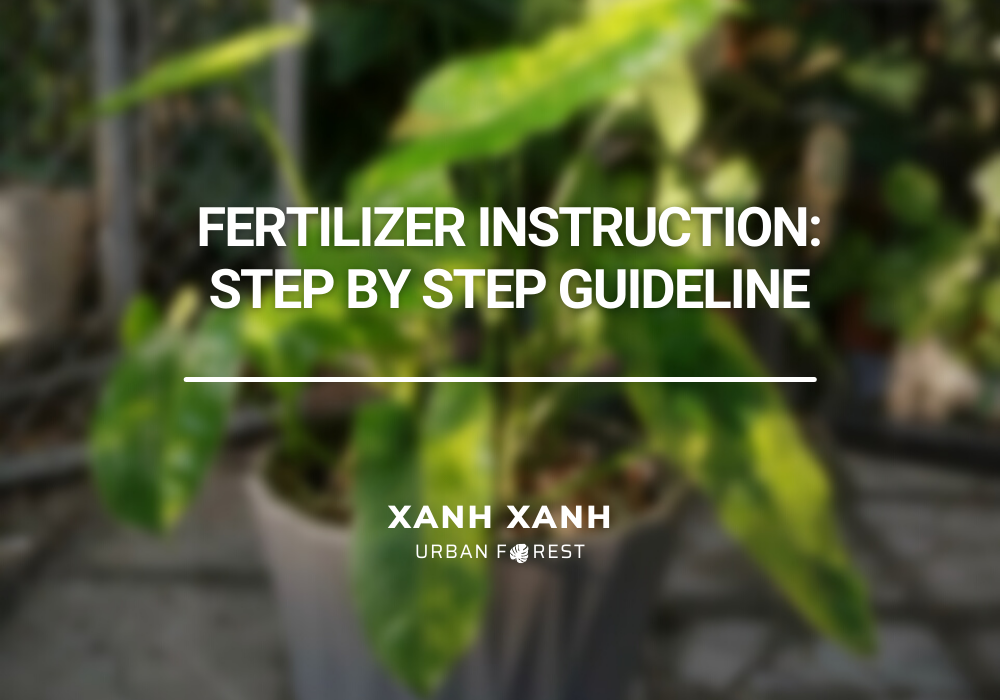Too many people overlook the importance of fertilizing indoor plants. However, proper feedings are essential to grow healthy, beautiful plants. Unlike an outdoor garden, where nature provides rain and plants can send new roots searching for food, the nutrients available to a houseplant are strictly limited by the amount of soil in the pot and what you provide for supplemental feeding. Therefore, this article will introduce you how to fertilize your plants.
Why plants need fertilizers
All of the nutrients essential to plant growth are present in the soil or are floating in the air, so what’s the point of fertilizing? The point is that not all plants can access the key nutrients found in the soil or in the air. Each soil type has its own mix of nutritional ingredients, so before considering what fertilizers a plant may require, we need to consider the soil in which a plant is growing.
Activities like intensive farming, construction, and traffic can alter soil chemistry and structure, limiting the nutrients that plants can use. In some cases, the nutrients aren’t naturally there to begin with or have been leached out over time. For these reasons, we, the diggers of the dirt and keepers of the garden, must replenish, replace, or help release those elements that are beyond the reach of our plants.
When it comes to fertilizing, more does not mean better. It is possible to overfeed your plants. Too much fertilizer can damage and maybe even kill your plants. Before applying any fertilizer, it’s a good idea to have your soil tested so you can select the type and formula that suits your plants’ needs. In return, our plants will reward us with bigger flowers, bigger leaves, and bigger fruits and vegetables.

Fertilizer instructions
Plants take nutrients primarily through their roots and leaves. Fertilization has the same effect.
1. Fertilize the roots.
- The safest, most time-saving, and most cost-effective method is to mix them with the accompanying growth media.
- Fertilizers that can be added with the growing media include organic (worms, rabbits, goats, etc.) and inorganic (slow dissolving, npk, etc.) fertilizers. They are very safe and convenient.
- The dose is mentioned on the label, and there are also directions for use.
2. Fertilize the leaves
- Trace fertilizers make up the majority of foliar fertilizers. To improve resistance and plant metabolism, the plant can absorb them through the stomata on the leaf surface.
- Some fertilizers for leaves, such as SuperThrive, Vitamin B1, and others, can be used on plants on a regular basis, effectively, and safely.
- The dose is mentioned on the label, and there are also directions for use.
How Often Should You Fertilize Indoor Plants?
The answer depends heavily on the type of plant you have and what kind of soil your plant has. Some houseplants require much more intensive feeding than others to maintain good growth and health.
However, it’s best to feed your houseplants every two weeks to once every few months, depending on the type of plant and the type of fertilizer you’re using. For houseplants or indoor plants, they should be fertilized regularly during the growing season. Avoid feeding your houseplants or indoor plants during cold months or winter.
How do you know if your plants need fertilizer?
If your houseplant is very slow to grow, looks dull, or won’t flower, those are sure signs that it could use some plant food. Since they can live in the same pot for many years, it’s a good idea to fertilize indoor plants on a regular basis, rather than wait until their health declines.

How to grow plants after receiving?
Step 1: Planting, inspect and care your plants
– After the arrival of your plants, inspect the roots and stems.
– Eliminate any broken roots to treat rotting roots, spray them with alcohol and then cut them off, after that apply the tree seal and let 30 minutes for it to fully dry.
Step 2: Collect all required equipment
– Sharp knives, scissors, ropes, and moss poles
– Media that is growing: 100% Pertile
– Boost root
Step 3: Grow plants
– For plants with well-developed roots
Place the roots lightly in a pertile growth medium. Utilize a straight stick and secure it to the stem with clamps to prevent the plant from move throughout the growing and nurturing phase.
Irrigate the roots with root stimulant solution to aid in the plants’ establishment, healing, and growth.
– For the plants that lack roots or short roots as a result of rotting roots being removed and aerial roots.
After cutting damaged roots, soak your plants for about 1 hour in a boost root liquid.
Use a bottle of clean water to handle nodes that lack roots have damaged roots or have aerial roots (bottled water, filtered water, ..). For short nodes, do not flood more than ½ of the stem length. For long nodes, flood about 2cm long.
Aerate to encourage root regeneration, daily water changes are necessary until the plants develop stable roots at which point they should be transplanted to a different growth medium. Maintain a moist environment to aid in plant recovery and growth.
Fertilizers provide plants with essential nutrients so that they can grow bigger, faster, and produce more food. However, we need to know how to fertilize properly to create the best condition for our plants to develop. Fertilizing houseplants is important, but doesn’t need to be difficult. Now that you know all about it, you’ll see just how easy it is.
If you find this article helpful, freely share it with your friends.

